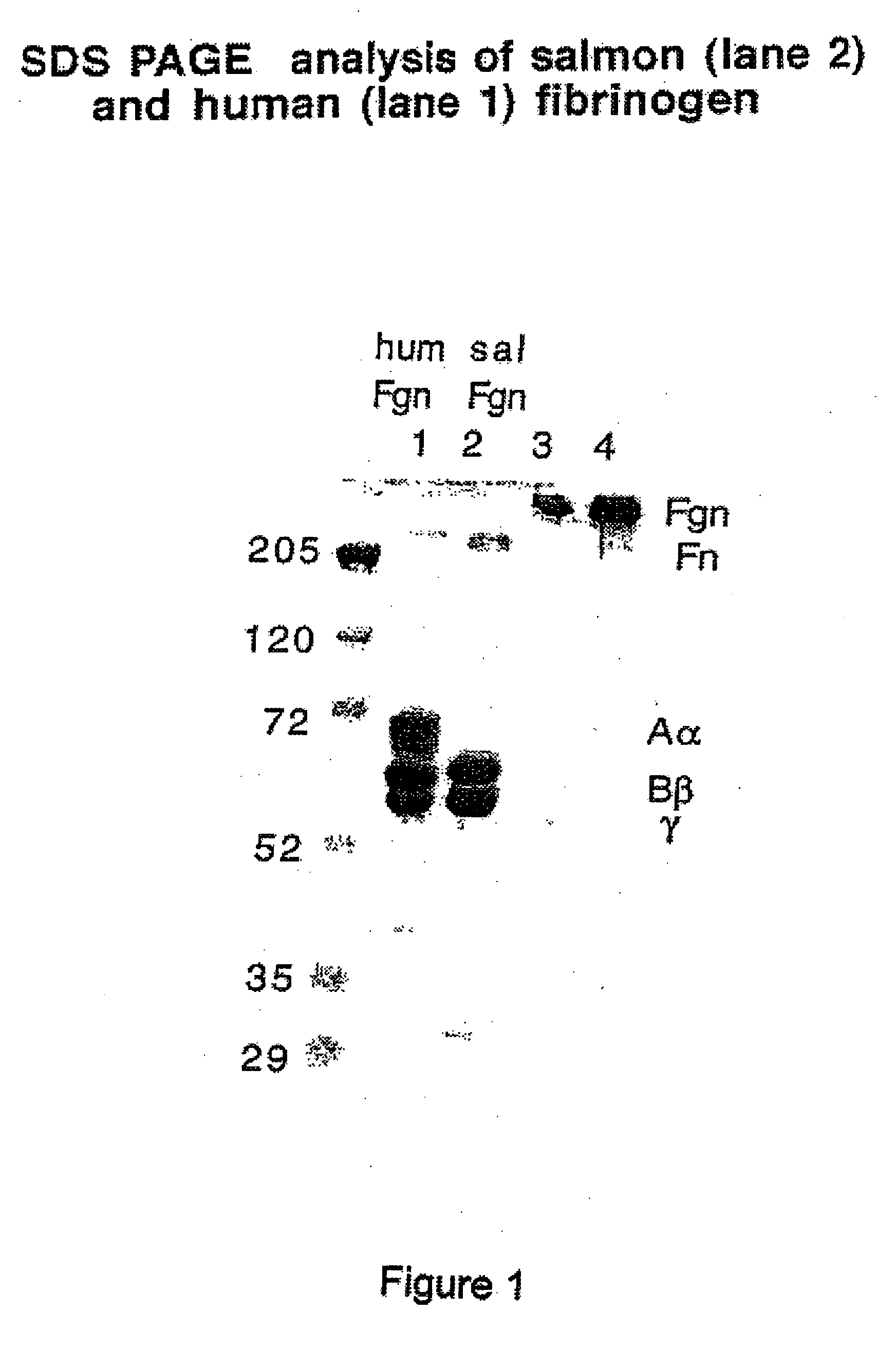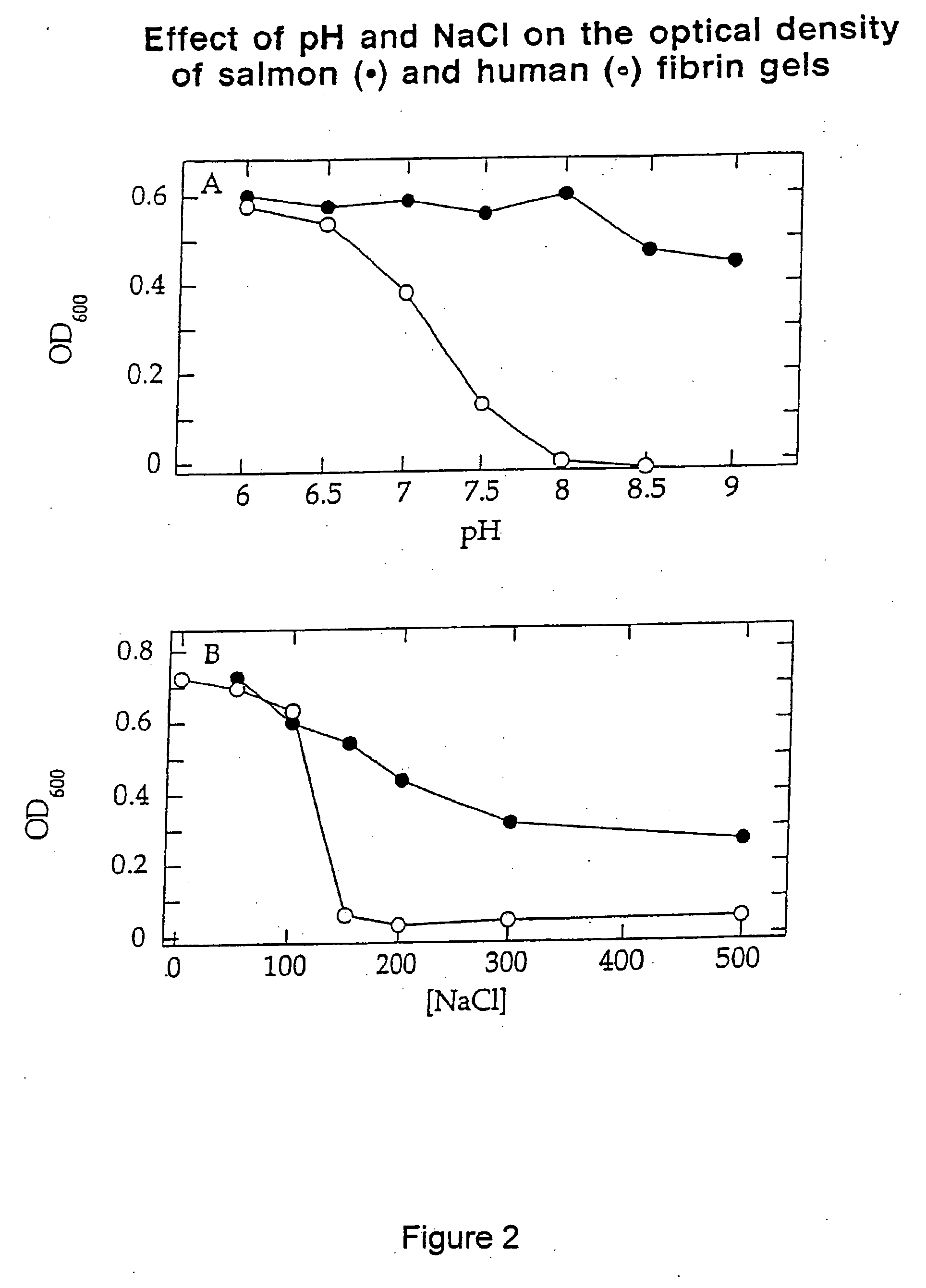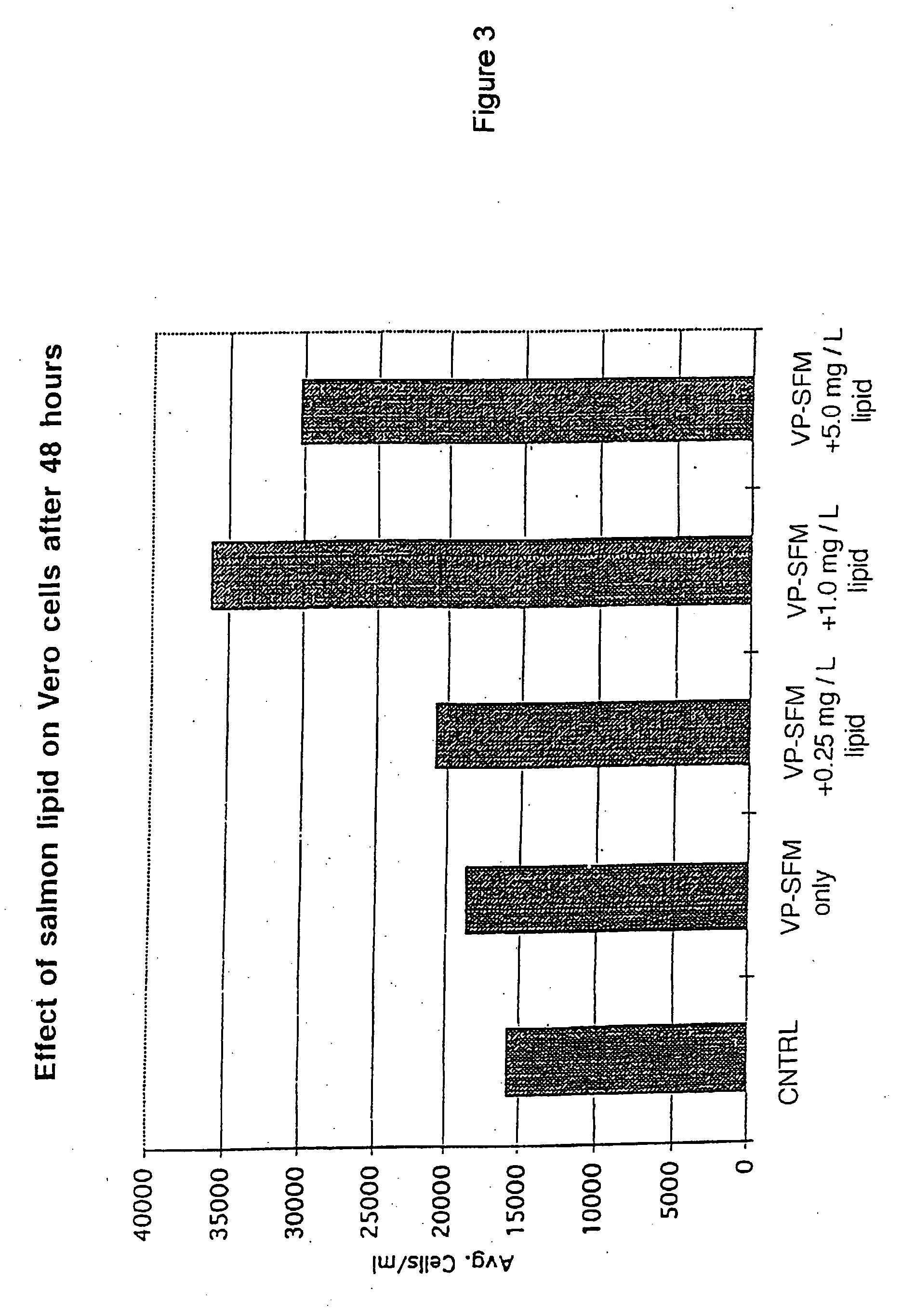Method of using fish plasma components for tissue engineering
- Summary
- Abstract
- Description
- Claims
- Application Information
AI Technical Summary
Benefits of technology
Problems solved by technology
Method used
Image
Examples
example 1
[0065] A green monkey kidney cell line (Vero) commonly used in commercial culture, the Promega Nonradioactive Cell Proliferation Assay (Fisher Healthcare, Houston, Tex.), and serum-free media, VP-SFM (Life Technologies, Inc., Grand Island, N.Y.), were used to evaluate the fish lipid component.
[0066] Test media were formulated as follows: [0067] 1. Control [0068] 2. VP-SFM only [0069] 3. VP-SFM plus salmon lipid (0.25 mgs / L cholesterol) [0070] 4. VP-SFM plus salmon lipid (1.0 mgs / L cholesterol) [0071] 5. VP-SFM plus salmon lipid (5.0 mgs / L cholesterol)
[0072] The frozen fish lipid was thawed in a water bath at 2-4° C. Assays were conducted using 24-well polystyrene culture plates. Each well was seeded with 30,000 cells in VP-SFM medium containing 5% fetal calf serum (FBS). The cells were allowed to attach and spread for a 24-hour period, and then the growth medium was removed by aspiration. All wells were rinsed thoroughly with the VP-SFM medium and the test formulations (3 wells ea...
example 2
[0077] Growing mammalian neurons in a gel made from fish plasma components is an example of in vitro cell culture with potential in vivo (tissue engineering) applications. Cell survival and neurite process extension in gels are established models for nerve regeneration in vivo (Schense et al., 2000).
[0078] Primary spinal cord neuronal cultures were prepared as described by Dunham (1988) from embryos harvested from timed-pregnant female mice (C57BL / 6J; Jackson Laboratory, Bar Harbor, Me.). Culture media and conditions for the neurons were also as described by Dunham (1988).
[0079] Lyophilized salmon fibrinogen and thrombin were reconstituted in water at room temperature, and the gels were prepared by treating 3 mg / L salmon fibrinogen with 1.5 U / ml salmon thrombin and adding 1.4 mM calcium in cell culture media. Similar gels were prepared using lyophilized human and bovine fibrinogen and thrombin. In order to embed neurons in the gel, fibrinogen, neurons, and cell culture media were ...
example 3
[0086] Adult Fisher 344 rats were deeply anesthetized and a bilateral dorsal hemisection lesion (the removal of a section of the dorsal portion of the spinal cord by aspiration (Grill et al. 1997)), was performed on each animal. In eight rats, the lesion site was filled with salmon fibrin, and in four rats with bovine collagen. The rats were allowed to recover, and were sacrificed 90 days after the surgery. The spinal cord lesion area was then sectioned and stained with NF (neurofilament), a general axon marker.
[0087] Definite regeneration was seen microscopically in two of the salmon-gel animals, and in none of the collagen gel animals.
[0088] Density of axons was determined by manually counting axons stained by NF in sections. In rats receiving the salmon fibrin, average axon density (N=7) was 0.0208 (std=0054). In the rats receiving collagen, average axon density (N=3) was 0.0159 (std=0097).
PUM
 Login to View More
Login to View More Abstract
Description
Claims
Application Information
 Login to View More
Login to View More - R&D
- Intellectual Property
- Life Sciences
- Materials
- Tech Scout
- Unparalleled Data Quality
- Higher Quality Content
- 60% Fewer Hallucinations
Browse by: Latest US Patents, China's latest patents, Technical Efficacy Thesaurus, Application Domain, Technology Topic, Popular Technical Reports.
© 2025 PatSnap. All rights reserved.Legal|Privacy policy|Modern Slavery Act Transparency Statement|Sitemap|About US| Contact US: help@patsnap.com



